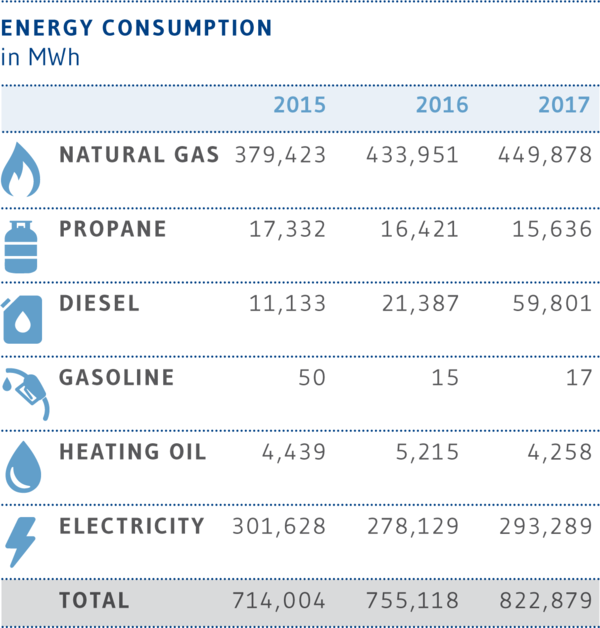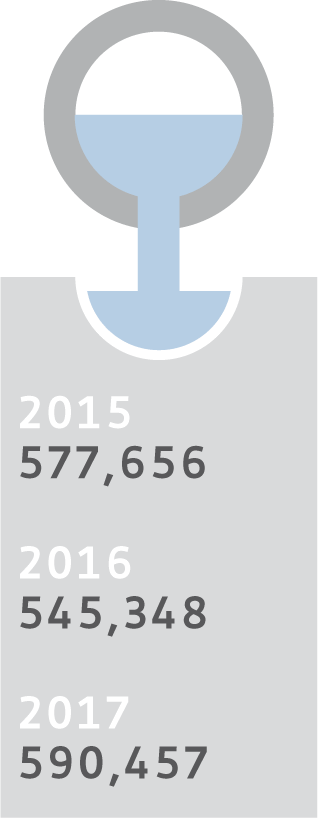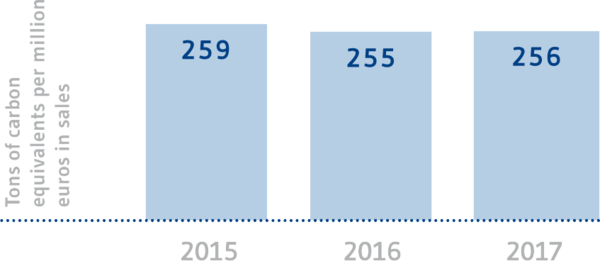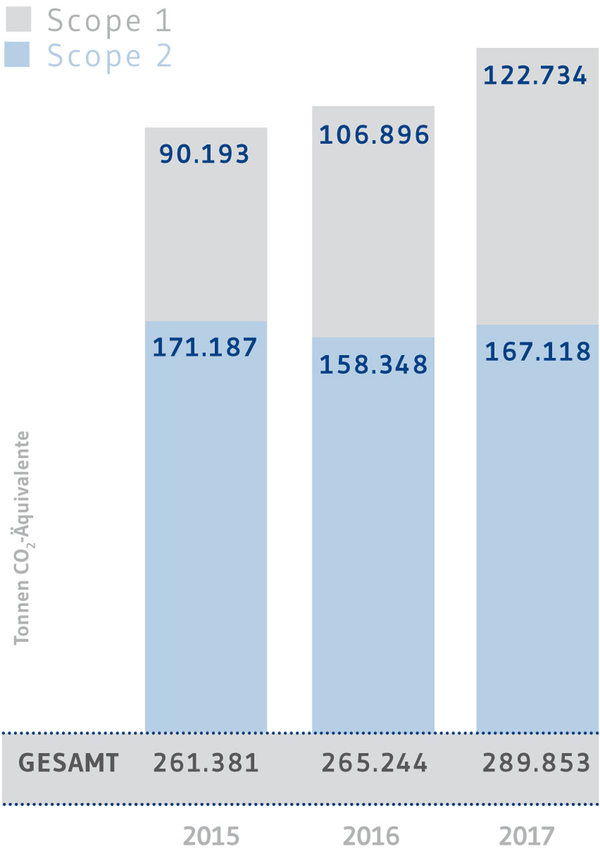Our Meinerzhagen site has been implementing various measures to increase energy efficiency for a number of years. In 2015 and 2016, our energy consumption was reduced in particular by our optimizing the supply of forging press water, a new furnace concept in zone B4 (large forging shop), and the commissioning of a combined heat and power system (CHP). A further reduction was achieved in 2017 among other things by optimizing our control arm presses, extrusion presses, and tool furnaces.
However, we do not focus solely on technical improvements in order to achieve our strategic energy goals. It is also important to us that we cultivate a sense of responsibility among our employees. Our aim is to encourage all the employees to use energy and resources sustainably and to actively apply themselves to the process of continuously improving our operating processes. OTTO FUCHS pays bonuses to its employees for their suggestions if selected. The 10 Golden Environmental Rules pocket card published in September 2017 summarizes our guiding principles regarding responsible joint conduct.
With this and other measures, the Meinerzhagen site is actively playing its part in improving energy efficiency and further optimizing our energy requirements. Electricity consumption at the Meinerzhagen site fell in the reporting period from 184,128 megawatt-hours in 2015 to 158,856 megawatt-hours in 2017. The energy consumption of OTTO FUCHS has increased overall since 2015 (822,879 MWh in 2017 compared with 714,004 MWh in 2015). OTTO FUCHS’s electricity consumption fell from 301,628 megawatt-hours to 278,129 megawatthours between 2015 and 2016, then increased again by a moderate amount in 2017.
Natural gas consumption increased from 379,423 megawatt-hours in 2015 to 449,878 megawatt-hours in 2017. This development is primarily attributable to an increase in sales and volumes, additional production facilities, and a general increase in the proportion of titanium and nickel products, which require higher forging temperatures, thus making them more energy-intensive to manufacture. An increase in finished parts, especially at our Meinerzhagen and Dülken sites, has also contributed to the overall development in energy consumption.
We are making a conscious effort to increasingly use natural gas at our plants, this being a low-emissions energy source. This is exemplified by the decision to commission a combined heat and power system at the Meinerzhagen site and the replacement of furnaces run on electricity by furnaces powered with natural gas. The resultant increase in natural gas consumption corresponds with a positive development in our greenhouse gas emissions thanks to the high utilization ratios and a good carbon footprint.






